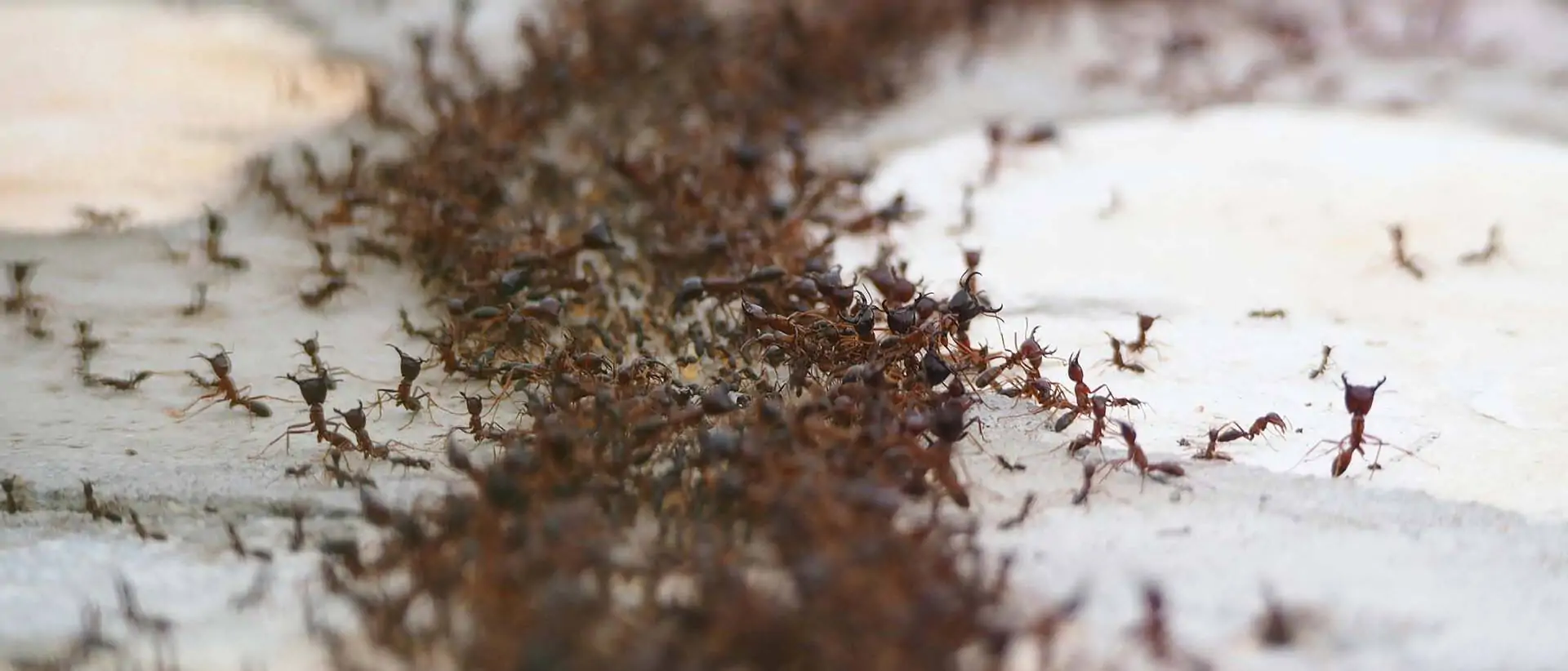Swarm intelligence what we logisticians can learn from ants – Part 1
Surely you use a navigation system. Then you are already relying on the performance of ants and swarm intelligence. Why? Because the most common satnavs are programmed with the so-called ant algorithm, which shows you the “best” way from A to B, just as ants have been doing for over 130 million years, so successfully, effectively and efficiently that the biomass of ants on this planet is now greater than that of humans. Unbelievable, isn’t it?
Swarm intelligence is the key
One could now erroneously deduce that the ant is a particularly intelligent creature. But that is not the case at all. The individual ant, in isolation, has a memory of no more than 10 seconds and a behavioral repertoire of about 25 variants. Today, this can actually be simulated almost equally well using computers and robots, not only for the sake of playing, but also for the purpose of application in logistics and supply chain. The intelligence of ants is based on a particularly interesting phenomenon. The so-called swarm intelligence. This means that the interaction of many individual ants, in a community with a high degree of division of labor – ant colony – leads to these remarkable achievements. Numerous experiments, including the Zweibrücken experiment, impressively demonstrate how this swarm functions. Applied to our entrepreneurial existence, a few mechanisms of swarm intelligence – crowd intelligence – can be identified.
Four mechanisms of swarm intelligence
How can we possibly generate swarm intelligence in companies and supply chains for the benefit of all parties involved? Recent research in this field has discovered the following four mechanisms of swarm intelligence:
- Independence of individual employees in their decisions
- diversity of the individual employees in terms of talents, experiences, knowledge, skills, etc.
- decentralized knowledge that only those employees who work on site can have (local knowledge)
and finally
- aggregation of all these individual performances, which are as independent, diverse and decentralized as possible, into an overall performance (swarm).
The wisdom of the many
The classic example of swarm intelligence is the empirical example of James Surowiecky (The Wisdom of the Crowds: Why Groups Are Smarter Than Individuals and How We Can Use Collective Wisdom for Our Economic, Social, and Political Action) with the equally classic example of estimating the weight of a gutted ox. The almost 1000 participants, who were made up of a wide variety of people – including not only numerous so-called experts such as cattle breeders, farmers and butchers, but also real laymen like you and me – came up with an average estimate that almost exactly matched the weight of the ox. The best individual estimate was worse than the average estimate (e.g. arithmetic mean) of all participants. And the surprising thing about it is that each person contributes to a result that is better on average than most individual estimates, through their independent and diverse approach, as well as through their particular decentralized access.
What this means for us in our day-to-day logistics and how we can use swarm intelligence to our own advantage will be examined in more detail in the second part.
Further information can also be found in the article Ant Algorithm.
